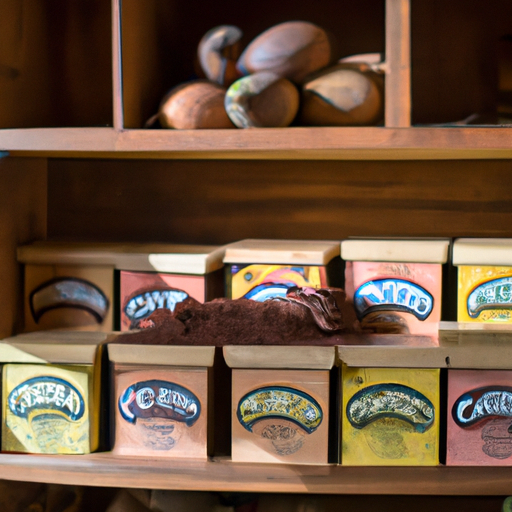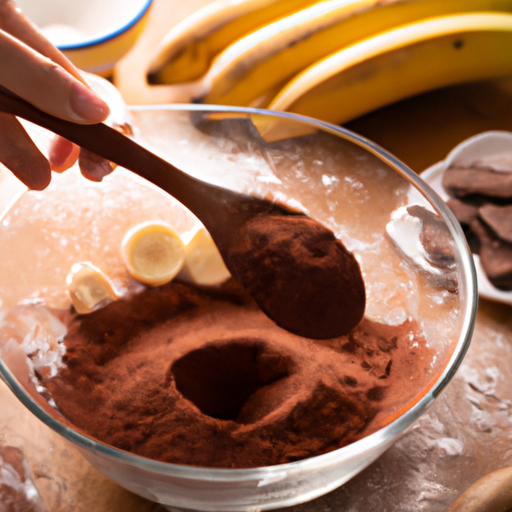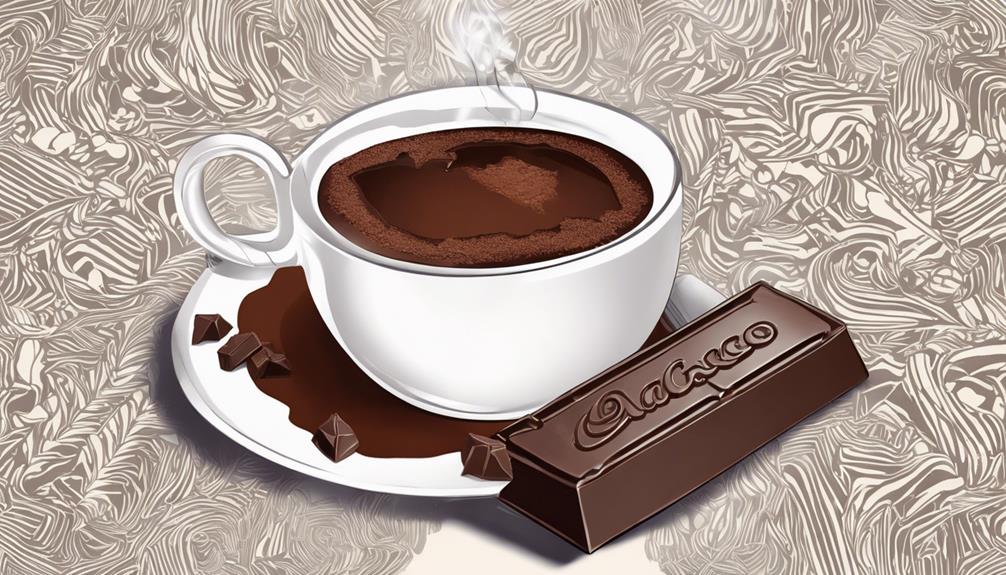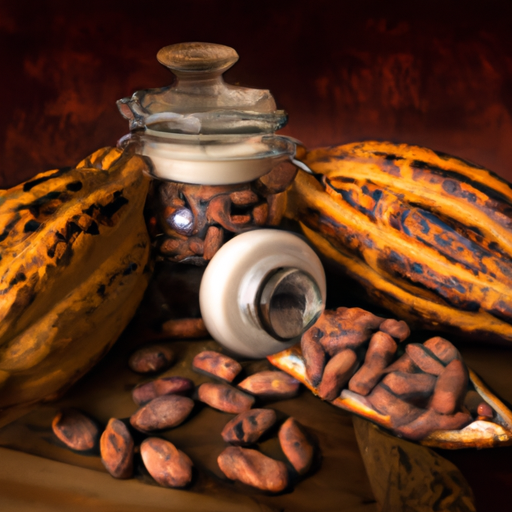Are you searching for the top spots to purchase raw cacao? Search no more! I have compiled a detailed guide on the best places to source this divine ingredient. Whether you’re a health-conscious food enthusiast or a fellow chocolate lover, raw cacao is an essential addition to your kitchen.
It’s packed with antioxidants, minerals, and mood-boosting compounds that will leave you feeling energized and satisfied. So, where can you get your hands on this magical superfood? You have plenty of options!
From health food stores and organic grocery stores to online retailers and specialty chocolate shops, there are numerous places that offer high-quality raw cacao. You can even find it directly from cacao farms or at natural food and wellness expos.
And for the DIY enthusiasts, I’ll also share some homemade recipes and DIY methods to make your own raw cacao treats.
Let’s embark on this delicious journey together and discover the best places to buy raw cacao!
Key Takeaways
- Raw cacao can be purchased from various sources such as health food stores, organic grocery stores, online retailers, specialty chocolate shops, farmers markets, co-ops and CSA programs, and cacao farms.
- Buying from health food stores and organic grocery stores ensures a variety of raw cacao products and high-quality options.
- Online retailers provide convenience and often work directly with cacao farmers and artisans.
- Specialty chocolate shops offer unique and decadent chocolate creations, as well as educational experiences.
Health Food Stores
You’ll easily find a wide range of raw cacao products at health food stores. These stores are the perfect place to satisfy your chocolate cravings while nourishing your body. From raw cacao powder to cacao nibs and even chocolate bars made with raw cacao, these stores offer a variety of options to suit your taste preferences. Raw cacao is known for its high antioxidant content, which can help protect against oxidative stress and promote heart health. It is also a great source of magnesium, iron, and fiber. By incorporating raw cacao into your diet, you can enjoy the delicious taste of chocolate while boosting your overall well-being.
Now, let’s explore the next section about organic grocery stores.
Organic Grocery Stores
For a wide selection of organic groceries, check out your local health food store. They often carry high-quality products such as organic raw cacao.
Organic grocery stores are a fantastic option for those who prioritize health and wellness. Raw cacao, in particular, is gaining popularity due to its numerous health benefits. Packed with antioxidants, minerals, and vitamins, raw cacao can boost your mood, improve heart health, and even enhance cognitive function. It’s a guilt-free indulgence that can be used in baking, smoothies, or enjoyed on its own.
But if you can’t find what you’re looking for at your local organic grocery store, don’t worry. There are plenty of online retailers that offer a wide range of organic raw cacao products to satisfy your cravings.
Online Retailers
If you’re in need of a convenient and reliable option, online retailers offer a wide selection of organic raw cacao products to satisfy your cravings. Here are four reasons why online retailers are a great choice for purchasing raw cacao:
-
Cacao beans vs. cacao powder: which is better for health benefits? Online retailers provide both options, allowing you to choose based on your personal preference. Cacao beans are packed with antioxidants and minerals, while cacao powder is convenient for adding to smoothies or baked goods.
-
The process of making raw cacao products: from bean to bar. Online retailers often work directly with cacao farmers and artisans, ensuring that the products are ethically sourced and made with care. This means you can enjoy the rich flavors and health benefits of raw cacao while supporting sustainable practices.
-
Wide variety of brands and flavors. Online retailers offer a vast selection of raw cacao products from different brands, allowing you to explore different flavors and find your favorite. Whether you prefer dark and rich or smooth and creamy, there’s something for everyone.
-
Convenience and accessibility. With just a few clicks, you can have your favorite raw cacao products delivered right to your doorstep. Online retailers make it easy to find and purchase organic raw cacao, saving you time and effort.
By choosing to buy raw cacao from online retailers, you can enjoy the health benefits and delicious flavors of this superfood without any hassle. Now, let’s move on to exploring specialty chocolate shops for even more tempting options.
Specialty Chocolate Shops
When it comes to indulging in decadent and unique chocolate creations, specialty chocolate shops are a haven for chocolate enthusiasts. These shops offer a wide range of high-quality chocolates made from raw cacao, ensuring a rich and intense flavor experience.
What sets specialty chocolate shops apart is their commitment to providing not just delicious chocolates, but also a memorable and educational experience. Many of these shops host chocolate tasting events, where you can sample different varieties of chocolates and learn about their origins and flavor profiles.
Additionally, some specialty chocolate shops even offer chocolate making classes, where you can learn the art of crafting your own delectable treats. It’s a truly immersive experience that allows you to appreciate the intricacies of chocolate making.
Moving on to the next section about farmers markets, you’ll find another avenue to explore and discover unique cacao products.
Farmers Markets
You’ll love exploring farmers markets for a delightful assortment of unique cacao products to discover and enjoy. Farmers markets are a treasure trove for local cacao bean suppliers, offering a wide variety of raw cacao products that you won’t find in mainstream stores. Buying raw cacao from farmers markets comes with several benefits. Firstly, you can support local farmers and artisans who are passionate about producing high-quality cacao. Secondly, you have the opportunity to learn about the origin and processing methods of the cacao, ensuring transparency and traceability. Lastly, farmers markets often offer a more affordable option compared to specialty chocolate shops. So why wait? Head to your nearest farmers market and indulge in the rich flavors of raw cacao. In the next section, we’ll explore co-ops and community supported agriculture (CSA) programs, which offer another avenue for sourcing raw cacao.
Co-ops and Community Supported Agriculture (CSA) programs
Co-ops and CSA programs are excellent ways to support local farmers and enjoy the benefits of fresh, locally sourced cacao products.
Co-ops, short for cooperative grocery stores, offer a wide range of organic and sustainable products, including raw cacao. By buying from co-ops, you not only get access to high-quality cacao, but you also contribute to the growth and success of local farmers and their communities.
CSA programs, on the other hand, allow you to directly support farmers by purchasing a share of their harvest. This means you receive a regular supply of fresh cacao, straight from the farm.
The advantages of participating in co-ops and CSA programs are numerous. Firstly, you have the opportunity to build relationships with local farmers, fostering a sense of community and connection. Additionally, you gain access to a variety of cacao products, allowing you to explore different flavors and types. Finally, there is the satisfaction of knowing exactly where your food comes from, supporting sustainable farming practices and reducing your carbon footprint.
Transitioning into the next section, let’s explore the benefits of buying directly from cacao farms.
Directly from Cacao Farms
If you’re looking for a truly immersive and authentic cacao experience, there’s nothing quite like connecting directly with the passionate farmers who grow this delectable crop. Buying directly from farmers not only supports local cacao growers, but it also allows you to experience the full journey of cacao, from farm to table.
When you purchase raw cacao directly from farmers, you can learn about their cultivation practices, the unique flavors of their beans, and the rich history behind their craft. It’s a chance to form a personal connection with the people who pour their hearts and souls into cultivating this magical fruit. By supporting local cacao farmers, you are not only getting the freshest and highest quality cacao, but you are also helping to sustain their livelihoods and preserve traditional farming methods.
Transitioning into the subsequent section about ‘natural food and wellness expos,’ you can also find opportunities to meet cacao farmers and learn more about their craft at these events.
Natural Food and Wellness Expos
Attending natural food and wellness expos provides an incredible opportunity to connect with passionate cacao farmers and gain a deeper understanding of their craft. These expos are buzzing with a vibrant energy, filled with like-minded individuals who share a love for natural beauty products and holistic healing methods.
Here are some highlights of what you can expect at these expos:
- Discover a wide variety of raw cacao products, from organic cacao nibs to rich, velvety cacao powder.
- Learn about the process of making homemade chocolate bars and the health benefits of using raw cacao in your recipes.
- Engage in workshops and demonstrations on how to incorporate cacao into your skincare routine for a natural glow.
- Explore the different ways cacao can be used for holistic healing, such as cacao ceremonies and energy healing practices.
- Connect with cacao farmers personally, hear their stories, and support sustainable farming practices.
Now, let’s dive into the world of homemade recipes and DIY methods to unleash the full potential of raw cacao.
Homemade Recipes and DIY Methods
Indulge your taste buds and unleash your creativity with a variety of homemade recipes and DIY methods that will elevate your experience with natural cacao.
Raw cacao is not only delicious, but it also offers numerous health benefits. Its rich antioxidant content promotes heart health, boosts mood, and enhances brain function.
Incorporating raw cacao into your desserts can be a game-changer. From decadent raw cacao brownies to creamy raw cacao mousse, the possibilities are endless.
You can also make your own raw cacao powder by grinding raw cacao beans in a blender or coffee grinder. This allows you to have complete control over the quality and purity of your cacao.
So why not experiment in the kitchen and create mouthwatering treats that are not only satisfying but also nourishing for your body?
Frequently Asked Questions
Are there any specific health benefits of consuming raw cacao?
Consuming raw cacao can have positive effects on mood and mental health. It contains compounds that boost serotonin and endorphin levels, promoting feelings of happiness and reducing stress. Additionally, raw cacao’s antioxidants can improve cardiovascular health by reducing inflammation and lowering blood pressure.
What are some popular brands or types of raw cacao products available in the market?
Raw cacao brands offer a wide variety of products. From artisanal chocolatiers to popular health food companies, there are options for everyone. Look for brands like Navitas Organics, Terrasoul Superfoods, and Healthworks to find high-quality raw cacao products.
How should raw cacao be stored to maintain its freshness and quality?
To maintain the freshness and quality of raw cacao, store it in an airtight container in a cool, dark place, like a treasure chest safeguarding its rich essence. This ensures it stays at its best for indulgent moments.
Can raw cacao be used as a substitute for regular cocoa powder in recipes?
Yes, raw cacao can be used as a substitute for regular cocoa powder in recipes. It adds a rich, intense flavor and contains more nutrients than processed cocoa. Incorporating raw cacao into recipes can enhance the health benefits of your dishes.
Are there any potential risks or side effects associated with consuming raw cacao?
When it comes to consuming raw cacao, it’s important to be aware of potential risks and side effects. While it can offer various health benefits, moderation is key to avoid any unwanted consequences.
Is Raw Cacao the Same Thing as Raw Cacao Nibs and Where Can I Buy Them?
Yes, raw cacao nibs are the same thing as raw cacao in a different form. You can purchase raw cacao nibs from health food stores, specialty grocery stores, or online retailers. There are plenty of raw cacao nibs purchase options available to suit your needs.
Conclusion
After exploring various options, I have concluded that there are numerous places to purchase raw cacao.
- Health food stores, organic grocery stores, and online retailers offer convenience and a wide selection.
- Specialty chocolate shops provide a unique and indulgent experience.
- Farmers markets, co-ops, and CSA programs offer a chance to support local farmers.
- For those seeking a direct connection to the source, purchasing from cacao farms is a great option.
- Natural food and wellness expos allow for discovery and education.
- Finally, for the adventurous souls, homemade recipes and DIY methods provide a creative and rewarding way to enjoy raw cacao.
Just like a river flowing through a forest, the possibilities for obtaining raw cacao are abundant and captivating.










